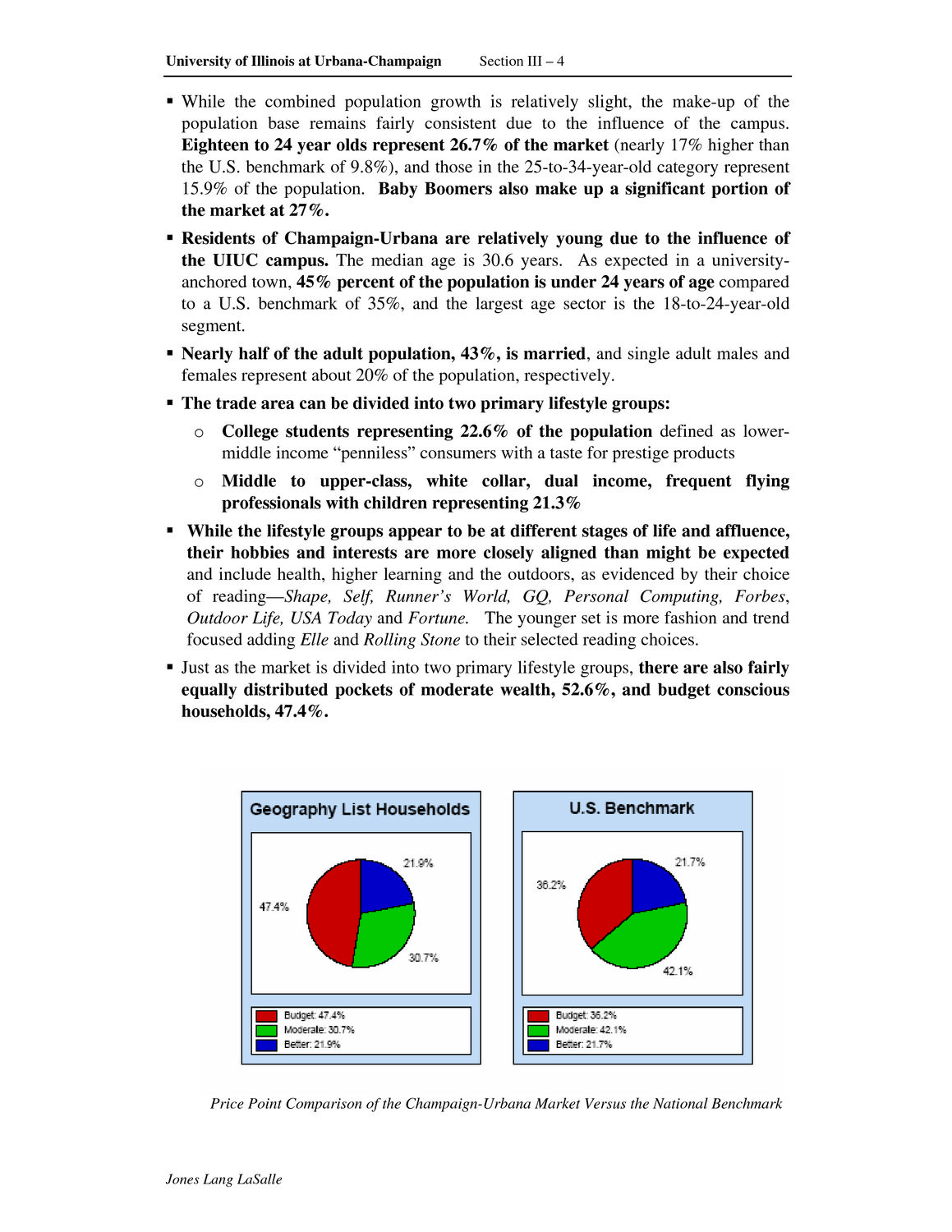| |
| |
Caption: Map of UIUC (2004) (Campus Retail Assessment)
This is a reduced-resolution page image for fast online browsing.

EXTRACTED TEXT FROM PAGE:
University of Illinois at Urbana-Champaign Section III – 4 While the combined population growth is relatively slight, the make-up of the population base remains fairly consistent due to the influence of the campus. Eighteen to 24 year olds represent 26.7% of the market (nearly 17% higher than the U.S. benchmark of 9.8%), and those in the 25-to-34-year-old category represent 15.9% of the population. Baby Boomers also make up a significant portion of the market at 27%. Residents of Champaign-Urbana are relatively young due to the influence of the UIUC campus. The median age is 30.6 years. As expected in a universityanchored town, 45% percent of the population is under 24 years of age compared to a U.S. benchmark of 35%, and the largest age sector is the 18-to-24-year-old segment. Nearly half of the adult population, 43%, is married, and single adult males and females represent about 20% of the population, respectively. The trade area can be divided into two primary lifestyle groups: o College students representing 22.6% of the population defined as lowermiddle income “penniless” consumers with a taste for prestige products o Middle to upper-class, white collar, dual income, frequent flying professionals with children representing 21.3% While the lifestyle groups appear to be at different stages of life and affluence, their hobbies and interests are more closely aligned than might be expected and include health, higher learning and the outdoors, as evidenced by their choice of reading—Shape, Self, Runner’s World, GQ, Personal Computing, Forbes, Outdoor Life, USA Today and Fortune. The younger set is more fashion and trend focused adding Elle and Rolling Stone to their selected reading choices. Just as the market is divided into two primary lifestyle groups, there are also fairly equally distributed pockets of moderate wealth, 52.6%, and budget conscious households, 47.4%. Price Point Comparison of the Champaign-Urbana Market Versus the National Benchmark Jones Lang LaSalle
| |